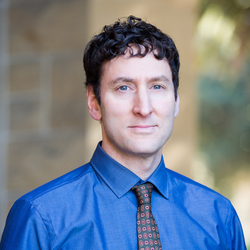How do you ask patients about current and past trauma? And how do you respond to their disclosures? Those are two key questions that members of a national collaborative who are among the early adopters of trauma-informed care practices have answered in a recent article in the journal Women’s Health Issues.

To Dr. Edward Machtinger, the lead author of the paper entitled, “From treatment to Healing: Inquiry and response to recent and past trauma in adult health care”, the article is also a call to action. “In this paper we especially say this is a framework for adult health care. These are ways of asking about current and past trauma for adults.” And why are they focusing on the adult health care system?
“We believe that adult health care providers have a huge role to play in addressing adverse childhood experiences (ACEs), for two reasons,” says Machtinger, director of the Women’s HIV Program and Center to Advance Trauma-Informed Health Care at the University of California at San Francisco. “So many of the ACEs are adult-mediated and, as we know, many of the ACEs perpetuate so many health conditions. So, if we can help a mother heal from her addictions to alcohol or crack cocaine, if we can help a father heal from his own childhood trauma and its consequences and stay out of prison, and stay alive, I can’t imagine a more impactful way to interrupt generational cycles of trauma.”
Fundamental to asking about trauma and responding to it, writes Machtinger and his peers, is cultivating a trauma-informed environment that acknowledges that past and current trauma is widespread, and frames patient care around the question “What happened to you?” rather than “What’s wrong with you?” It also requires health care providers to think about what would help inspire a feeling of safety and build trust so that patients feel comfortable sharing their ACEs and current trauma with their health care providers.

Handouts that cover sensitive topics are one way to create a safe environment. “Having [information] available in the exam room, or the waiting room or in the restroom — for victims of intimate partner violence, sometimes the only time they’re alone is in the restroom – having information like that is often a very powerful way of helping patients get ready to disclose what’s going on in their lives,” says Dr. Brigid McCaw, director of the Family Violence Prevention Program at Kaiser Permanente in Oakland, Calif.
And, adds McCaw, key to her patients’ comfort level in sharing any current or past trauma in the home is building into her workflow one-on-one time between clinicians and patients.“There’s no way that people can often reveal the depth of what has happened in their lives or what is going on in their lives unless they’re confident that there’s a clinical setting where that will be private,” she says.
The collaborative also emphasized that health care providers need to have resources and referrals in place for patients. If, for example, a patient discloses that there’s violence in the home, the authors wrote, “affirm that she or he does not deserve to be treated that way; express concern for the patient’s safety and that there are many helpful resources; and offer a warm handoff to an onsite social worker or to a local or national domestic violence agency to provide ongoing support services, preferably while the patient is still on site.”
By putting their collective experiences together — which also included getting input from patients — the collaborative developed different options for asking people about their ACEs in different ways. Some people like to use screening tools, others like to read information, while others prefer talking to a health care provider about what can be a very sensitive and sometimes stigmatizing topic, says McCaw.
The options for inquiring about ACEs include: “Assume a history of trauma instead of asking.” Patients can be educated about the links between traumatic life experiences, illnesses and coping behavior and can be offered referrals for support.
Another option is: “Screen for the impacts of past trauma instead of for the trauma itself.” Both this approach and the first one do not require patients to describe details of ACEs, explain the authors. In this second approach, the collaborative suggested screening for symptoms and conditions that are often associated with ACEs, including “anxiety, post-traumatic stress disorder, depression and suicidality, substance use disorder, chronic pain and morbid obesity.”

And the authors say that included in an approach that’s sensitive to trauma, health care providers can forge more trusting relationships with their patients if they do not judge them for behaviors they used to cope with their ACEs and current trauma. “If we can really understand the behaviors that can be perceived as problematic or challenging to deal with in a health care setting, if we can get providers to understand that these ‘challenging’ behaviors are really coping strategies and mechanisms that people are using to survive their history of traumatic experiences, then we can start a new type of conversation about what wellness really means to an individual,” says Naina Khanna, a coauthor, a sociology PhD student at University of California at San Francisco, and the executive director of the Oakland, Calif.-based Positive Women’s Network-USA, an organization that empowers women living with HIV.
Machtinger describes how that’s worked for him at the Women HIV Program: “Three of my patients today talked openly with me about their crack addiction. That was a sign they were comfortable revealing things that they could be fearful or ashamed of revealing. Our clinic is a place where people don't feel judged. We understand that a crack problem is not a character problem, but a way to cope with an intractable trauma that they’re feeling.”
Another option for asking about ACEs is with an open-ended question, the authors wrote: “Difficult life experiences, like growing up in a family where you were hurt, or where there was mental illness or drug/alcohol issues, or witnessing violence can affect our health. Do you feel like any of your past experiences affect your physical or emotional health.”
If the patient answers yes, one suggested script that health care providers can use to reply, according to the article, is: “I am so sorry that happened to you. Past traumas can sometimes continue to affect our health. If you would like, we can talk more about services that are available that can help.”
The authors also described a wide range of traumatic experiences that can impact their patients’ health including community violence, war, racism, homophobia and xenophobia, and experiences in the foster care, immigration and criminal justice systems.
The fourth option proposed for health care providers is to use a structured tool to explore past traumatic experiences. An example of a screening tool, write the authors, is the ACE questionnaire, which asks patients whether they have experienced 10 types of childhood trauma, including sexual and physical abuse, witnessing violence within the home, having a parent who uses drugs or alcohol or has a mental illness. If selecting an ACE screener, the authors wrote, “It is essential that the patient be able to discuss their responses with the provider in private.”

To introduce any of these options, health care providers also need to deploy some tools to ensure they’re taking care of themselves. In the article they’re described as the 4 Cs: Be calm; contain the interaction; care for the patient and yourself; focus on coping. “I mean those 4 Cs to be for patient and the provider at the same time because when the patient has experienced trauma and they’re dysregulated or upset, especially because there are frightening power dynamics that happen in the health care setting where one feels very vulnerable, the provider would be focusing on their own breath, their own grounding, their own selfcare simultaneously with helping to transmit that to the patient, whether it’s done out loud or not,” explains Dr. Leigh Kimberg, who developed the 4 Cs, is another coauthor, and is a primary care physician at San Francisco General Hospital and a professor of medicine at UCSF.
“We don’t know yet which approach is best — which one is most acceptable to patients and providers and ultimately links patients with a history of significant trauma to the treatments they want and need,” says Machtinger. “ So, for now, we provide concrete options and scripts for providers and they can use the ones that feel best to them and their patients.
But Machtinger and his colleagues are clear that health care providers need to embrace a practice that recognizes how central recognizing trauma is to health care.
“The alternative, not inquiring about and addressing past trauma using any approach, in our opinion, will predictably lead to worse experiences and outcomes of care for all involved.”





Comments (0)